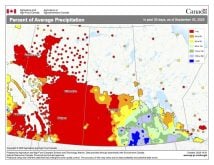With the quiet and almost perfect winter weather we have been receiving over the last month and a half (ignoring the one week of cold weather), there is just not much new and exciting on the weather front. That means we can get back to our Meteorology 101 course — back to school, everyone! In our first class we discussed how the sun creates energy and then how that energy travels from the sun to Earth. Today we will start to look at how that energy is distributed around the Earth because, after all, this distribution of solar energy is what creates and drives the weather across our planet.
If we look at Earth’s distance from the sun and calculate how much of the total sun’s energy the Earth receives, we discover that we only receive about one two-billionths (1/2,000,000,000) of the sun’s total energy output. This makes sense as the sun is a sphere emitting energy in all directions and Earth is a relatively tiny object taking up a very small amount of three-dimensional space. Even this tiny amount of the sun’s energy is an enormous amount of energy to be added to Earth’s system.
When climatologists and meteorologists talk about incoming energy from the sun, they use the term insolation. This term is used whether we are talking about the sun’s energy arriving at the top of the atmosphere or at the surface of the Earth. Since our atmosphere can affect the amount of the sun’s energy reaching the surface, scientists like to know how much energy is reaching the Earth at the top of the atmosphere. This insolation is called the solar constant.
Read Also

October rain recharges Manitoba soils
Daniel Bezte looks back on October weather on the Prairies and looks ahead to see whether there’s any consensus for this winter’s weather.
The solar constant is the average amount of insolation received at the top of the atmosphere when the Earth is at its average distance from the sun. We need to use the average distance from the sun because Earth’s orbit is not perfectly round but is actually slightly elliptical. On average, the Earth is about 150 million kilometres from the sun. At its closest point, called perihelion, the Earth is about 147 million km from the sun — this occurs around Jan. 3. The furthest point, or aphelion, occurs around July 4 when Earth is about 152 million km from the sun. This reminds me of one of my weather pet peeves: we are not warmer in the summer because we are closer to the sun; if you noticed, we are actually closest during our Northern Hemisphere winter.
Now, back to the solar constant. The solar constant value is 1,372 watts per square metre. While this is the typical way of looking at the solar constant, another way of expressing it would be that it equals about two calories per square centimetre per minute. A calorie is the amount of energy needed to raise one gram (i.e., 1 mL) of water one degree Celsius.
One of the bigger questions that has arisen lately is, just how constant is the energy output from the sun? While this is a hot topic (no pun intended), it is actually a very complicated one to figure out. The best estimates put the variability of the solar constant around 0.1 to 0.2 per cent, or about 1.2 to two watts per square metre. While there is no argument that even a fairly small change in the sun’s energy output can have big effects here on Earth, that is a topic for future weather classes.
On a curve
So, we now know that the Earth receives energy from the sun at a relatively constant rate. If the Earth was a flat object pointing straight at the sun, things would be pretty simple — but we are not flat, we are a sphere. I am not going to argue with the flat Earthers here, we are, quite simply, a 3-D round object floating in space and the fact that we are round creates all sorts of problems. It would be so much easier if we were flat! Earth’s curved surface results in different parts of the Earth receiving different amounts of insolation. Areas of the Earth that have the sun directly overhead, so that the sun’s rays hit perpendicular to the Earth’s surface, will receive the maximum amount of insolation. The further away from perpendicular the sun’s rays are, the less insolation is received. Because of this, the Earth’s equatorial regions receive 2.5 times more insolation on average than the poles.
Keep in mind that we are talking about the amount of insolation received at the top of the atmosphere. If we looked at the amount of insolation received at the surface, we would find an even greater difference. Since the polar regions have a low solar angle, the energy from the sun has to travel through much more atmosphere when compared to the equatorial regions. This longer path results in more energy being absorbed and reflected, resulting in even less energy making it to the ground.
Remember I said a round Earth makes things more complicated — well, the fact that we spin means we have a day and night. While the equatorial regions receive a lot of solar insolation, they only receive it for half a day at a time. The poles, for half the year, receive no solar insolation, while in the other half they get it all day long. While the amount of solar insolation might be low due to the low sun angle, receiving sunshine all day long adds up. In fact, the poles, for a short time each year, receive more solar insolation in a day than the equator does, but more on that in the next couple of classes. I think this a good stopping point for now.
In our next class we will continue our look at solar radiation by examining global net radiation and exploring the reasons for the seasons and their effect on our energy balance. We’ll finally get to the question of why we don’t see our coldest weather (on average) until about one month after the date we receive the lowest amount of solar insolation. Until then, hope you enjoy the weather.
















